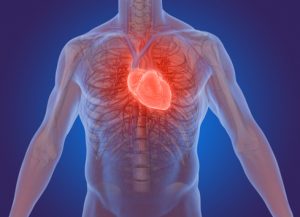 Pericardial effusion is a condition that describes fluid accumulation around the heart. The double-layered structure that surrounds the heart is known as the pericardium, and there is normally a thin layer of fluid found between the layers. Fluid in greater amounts can accumulate in the pericardium as a result of an injury or disease—it can also be the result of inflammation or bleeding.
Pericardial effusion is a condition that describes fluid accumulation around the heart. The double-layered structure that surrounds the heart is known as the pericardium, and there is normally a thin layer of fluid found between the layers. Fluid in greater amounts can accumulate in the pericardium as a result of an injury or disease—it can also be the result of inflammation or bleeding.
Too much fluid around the heart can cause added pressure on the heart, and if left untreated, it can be a fatal condition.
Is fluid around the heart dangerous?
Advertisement
The answer largely depends on the cause of the excess fluid. There are a variety of causes, and different causes correlate to how dangerous the condition is.
In many cases, fluid around the heart is the result of a viral infection and it will clear up on its own—in this case, the condition is less dangerous. If fluid around the heart is a result of trauma or an autoimmune disease, it is very dangerous.
Types of fluid around the heart (pericardial effusion)
There are four types of pericardial effusion: serous effusion, fibrinous effusion, hemorrhagic effusion, and purulent effusion. Serous effusion is associated with an irritation of the pericardium, where excess fluid is excreted from the visceral layer of the serous pericardium.
Fibrous effusion contains fibrin, which is organized and forms adhesions. Hemorrhagic effusion is the result of blood mixing with other substances in the body, and purulent effusion is a collection of pus around the heart that is often caused by an infection.
Symptoms of having fluid around your heart
Symptoms presented by pericardial effusion gradually increase as fluid accumulation increases. Symptoms may include shortness of breath or difficulty breathing, discomfort breathing when laying down, chest pain experienced on the left side, and chest fullness.
You should call 911 immediately if symptoms of chest pain persist for more than a few minutes, or if breathing becomes increasingly difficult or painful.
What causes fluid around the heart?
As mentioned, there are a variety of causes of pericardial effusion that range in severity. In some cases, when a cause cannot be determined, it is known as idiopathic pericarditis.
Causes of fluid around the heart include:
- Inflammation of the pericardium as a result of heart surgery or heart attack
- Autoimmune disorders such as lupus
- Spread of cancer, in particular, lung cancer, breast cancer, or melanoma
- Cancer of the pericardium
- Radiation therapy used to treat cancer
- Waste product in the blood as a result of kidney failure
- Hypothyroidism
- Viral, bacterial, fungal, or parasitic infections
- Trauma to the chest or heart
- Certain prescription drugs such as medications to treat high blood pressure, epileptic seizures, or tuberculosis drugs
Diagnosis of pericardial effusion
Your doctor will run a series of tests in order to properly diagnose pericardial effusion. These tests include:
- Medical examination
- Echocardiogram, which uses sound waves to obtain a picture of your heart. Your doctor will look at the space between your heart and pericardium to determine the extent of fluid accumulation. There are two types of echocardiograms: transthoracic or transesophageal, which is either a device over the chest or a tube inserted down the esophagus.
- Electrocardiograms, which record electrical signals transmitted from the heart
- Chest x-ray
- Other imaging tests like CT scan or MRI
- Blood tests
Pericardial effusion treatment guidelines
Advertisement
Treatment for pericardial effusion is based on what the underlying cause of the condition is. This means your doctor may recommend anti-inflammatory medications, antibiotics, corticosteroids, or aspirin. If these treatments are unsuccessful, then your doctor may need to drain the fluid around the heart by inserting a thin needle and a catheter. Other treatment methods include open heart surgery, balloon pericardiotomy—which uses a deflated balloon to stretch the layers around the heart—and removing parts or all of the pericardium, which is often used in cases that are reoccurring.
In order to avoid complications from pericardial effusion, it’s best you see your doctor the moment you begin to experience symptoms. When it comes to matters of the heart, you don’t want to mess around. If you experience any chest-related symptoms, you should have yourself checked out as it can also be an indicator of a heart attack.
Related: Leaky heart valve: Symptoms, causes, and treatments
